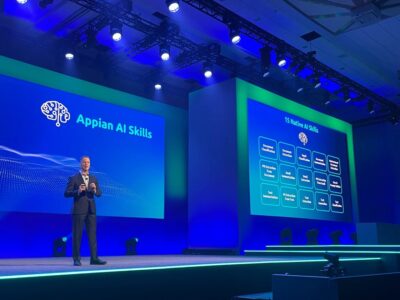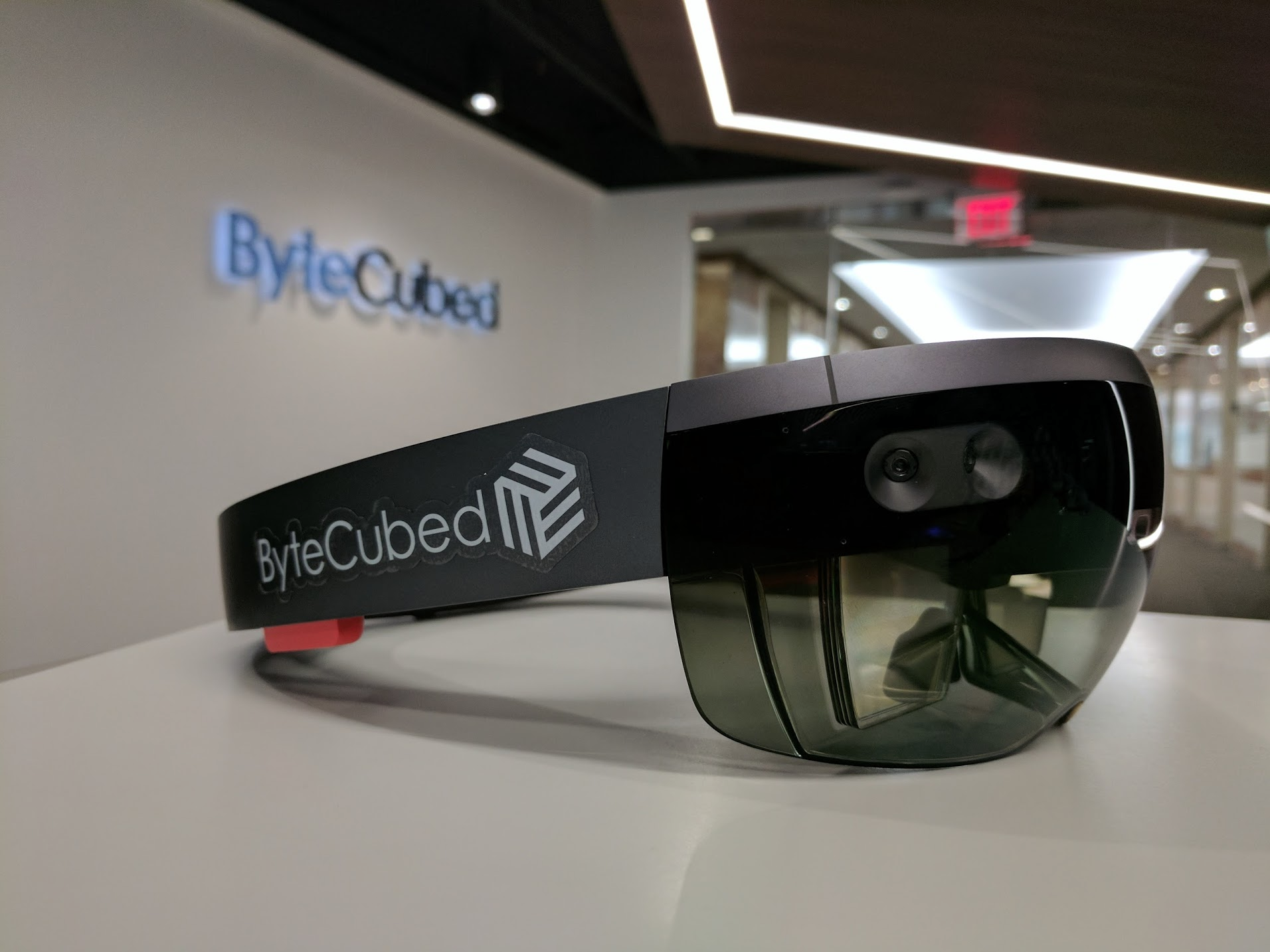There’s lots of talk about being early to a new technology. When it comes to holographic computing, ByteCubed’s Creative Director Jordan Higgins knows that it’s not just about getting there first, but also learning from the right teachers.
He and the Crystal City–based government tech consulting firm’s team saw no better instructors than Microsoft’s HoloLens team.
The HoloLens headset creates an environment that’s known as mixed reality. There’s no strict definition of mixed reality—along with artificial reality, virtual reality and spatial computing—but in a nutshell, this sector of holographic computing devices allows users to engage with digital content within the confines of the world around them.
Microsoft sells two versions of their headset: a development edition, for individuals interested in small scale use, and the commercial suite, ideal for businesses ready to use the holographic technology to enhance their enterprises.
Currently, the tech giant runs pilot partnership programs across the U.S. featuring the HoloLens technology–from high school classrooms in Colorado to the Baltimore Ravens.
Through their Mixed Reality Partner Program, Microsoft expands their reach to businesses and the overall utility of mixed reality technology.
“The HoloLens was one of the first holographic computing devices to become available to developers, and we were really excited to get our hands on it and start creating mixed reality experiences as early as possible,” Higgins told Technical.ly. “As with any new technology, there was a lot to learn about design and development, and there’s no substitute for hands-on experience.”
“Each session we attended featured experts across many areas of mixed reality including technical capabilities, coding, spatial audio, interface design, all the new ways of thinking and creating applications that come with working with this technology,” Higgins said.
Now that ByteCubed officially completed training in the Mixed Reality Partner Program, the tech consulting firm wants to define mixed reality on their own terms and expand solutions for technical and visualization problems.
Last month, Windows announced that the HoloLens Agency Readiness Partner Program would expand into the Mixed Reality Partner Program. Last week, ByteCubed announced that it is first company based in the DMV area to become a partner.
"I'm inspired by how Windows #MixedReality blends digital and physical experiences together" – @jhiggins @msPartner #MSInspire pic.twitter.com/Dp7N0M2ezl
— ByteCubed/U.Group (@bytecubed) July 13, 2017
In addition to learning the wide range of capacities in mixed reality from HoloLens experts, as a part of this program, ByteCubed created a prototype for the National Geospatial-Intelligence Agency (NGA).
The ByteCubed team transformed a book of maps used by multiple government agencies for large scale National Special Security Events into a dynamic holographic geospatial environment.
“Our primary goal was to start exploring how mixed reality could be applied to a real-world mission,” Higgins said. “We had many questions about the platform, and this proof of concept enabled us to focus our design and development on working out core interface concepts and technical requirements.”

A screenshot of ByteCubed proof of concept with HoloLens technology (Courtesy photo).
Creating this prototype required the ByteCubed team to re-conceptualize not only digital interfaces that can simultaneously exist in physical spaces, but also their rapid prototyping toolkit.
NGA provided an analyst to the ByteCubed team during this process—an invaluable asset, according to Higgins—who found great potential in protoypes’ potential to expand NGA’s customer reach and interact in new methods. But NGA isn’t the only agency poised to benefit from ByteCubed’s advancements.
“One of our favorite things about this proof of concept was that it was designed with other government agencies and commercial partners in mind,” Higgins said. “We definitely see a lot of potential to create a mixed reality platform that could be customized and tailored to a broad range of applications for government and commercial customers that need to visualize and collaborate around geospatial data.”
Now that they’re ready to share their knowledge, ByteCubed wants to use mixed reality technology to enhance their work in data science, artificial intelligence, and machine learning.
Working with HoloLens felt like designing for the future for Higgins and he described mixed reality as a new frontier. If that turns out to be true, then undoubtedly just as with the original frontier, where one goes, more will surely follow.
Join the conversation!
Find news, events, jobs and people who share your interests on Technical.ly's open community Slack

DC daily roundup: Esports at Maryland rec center; High schoolers' brain algorithm; Power data centers with coal?

DC daily roundup: Tyto Athene's cross-DMV deal; Spirit owner sells to Accenture; meet 2GI's new cohort

DC daily roundup: $10M to streamline govt. contracting; life sciences might dethrone software; Acadia's new $50M

